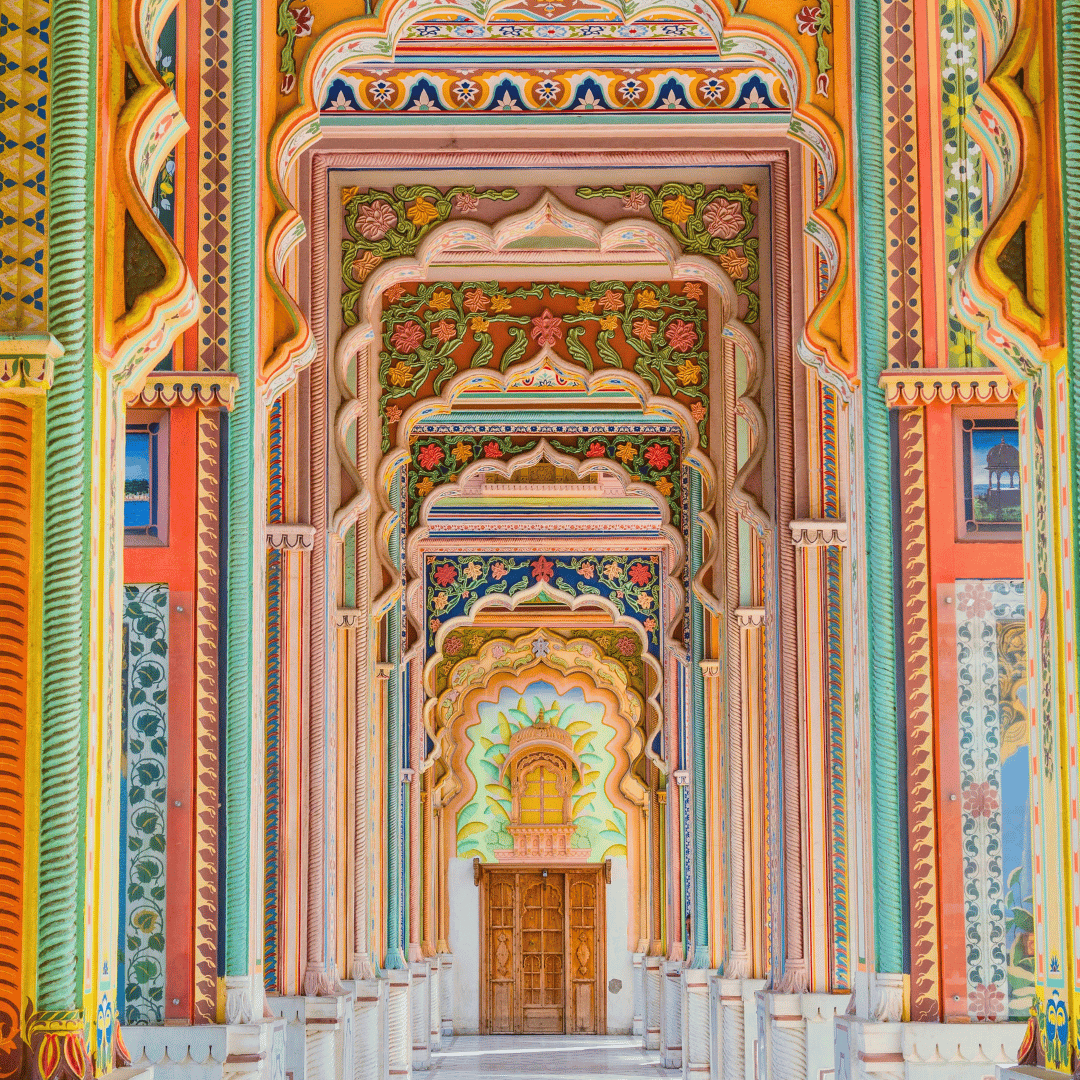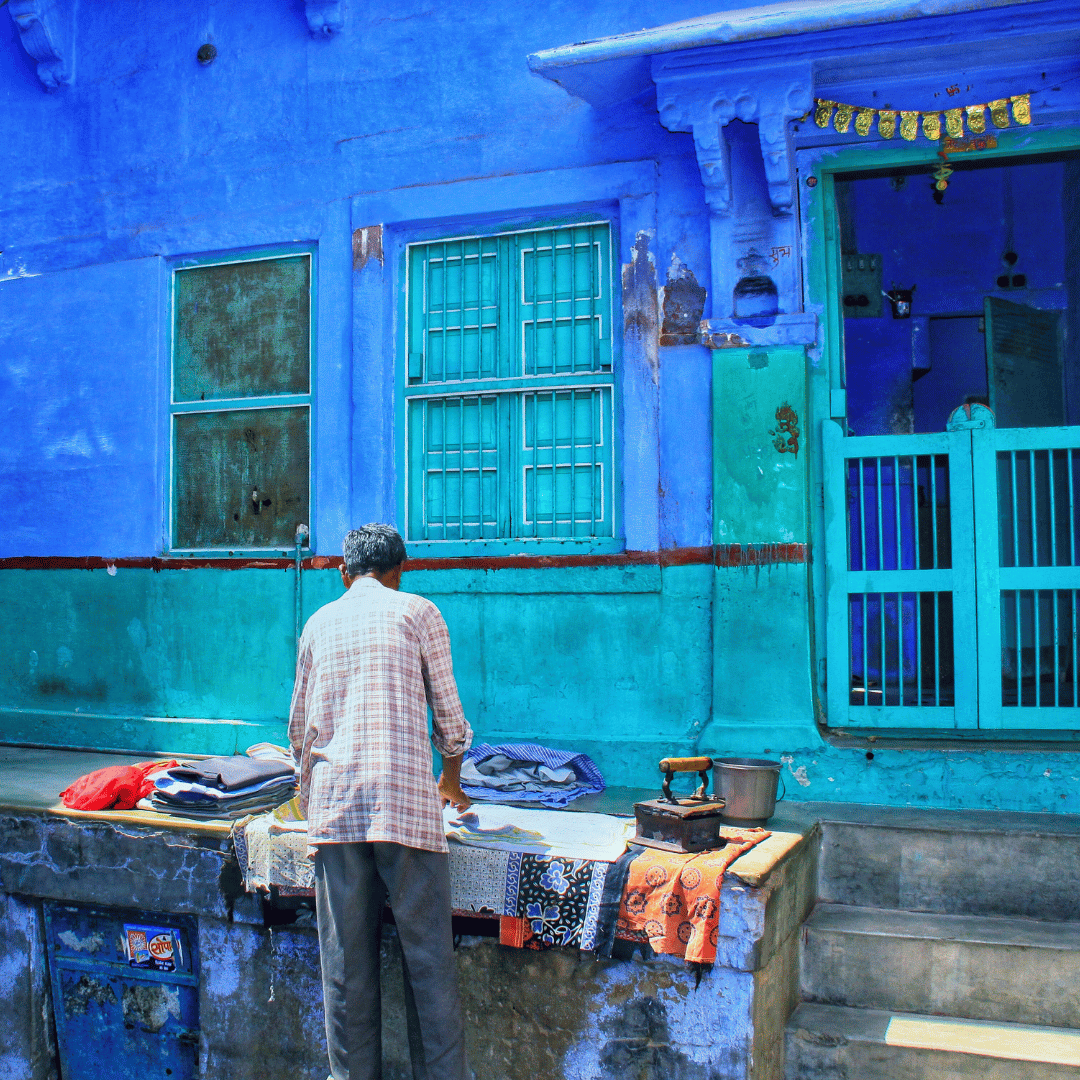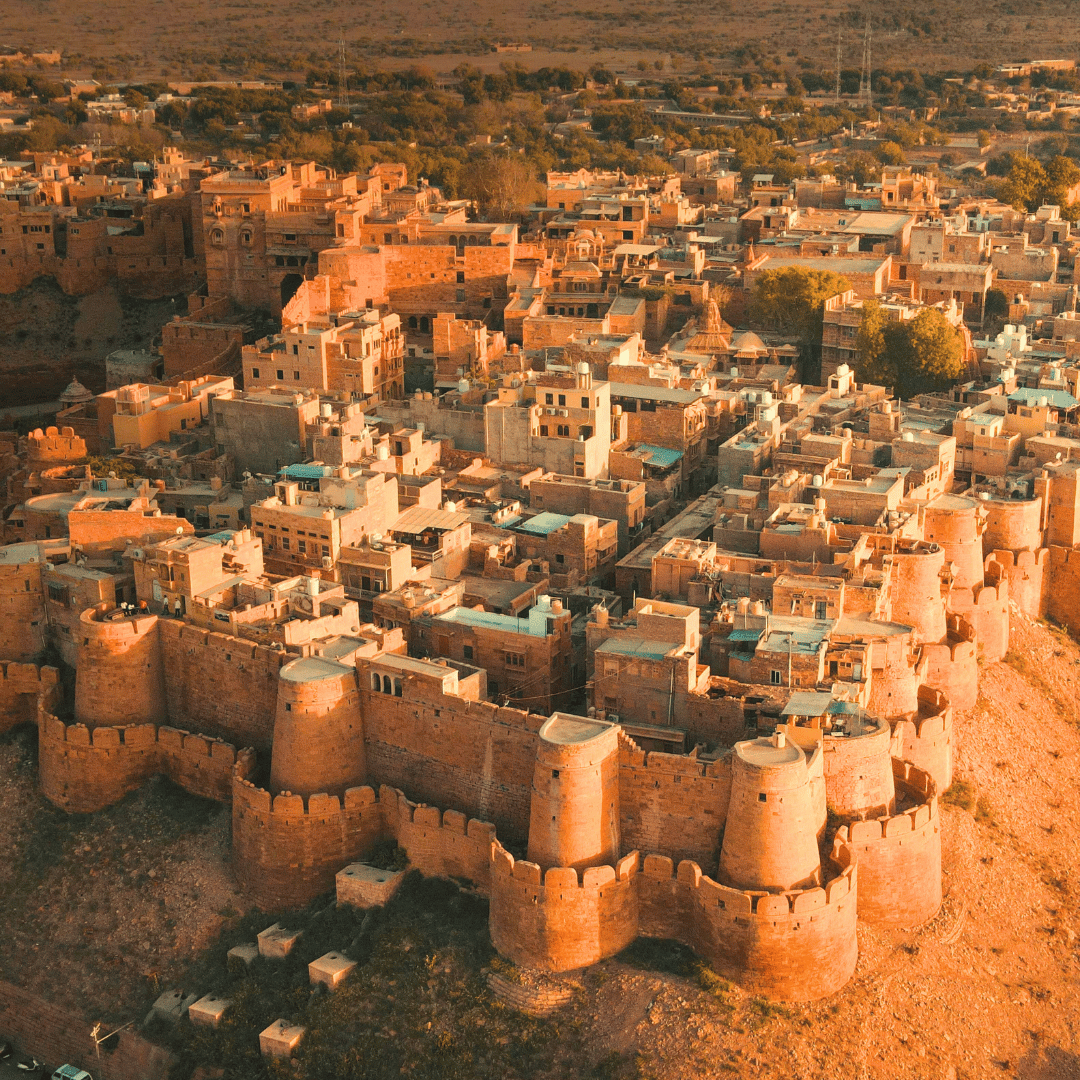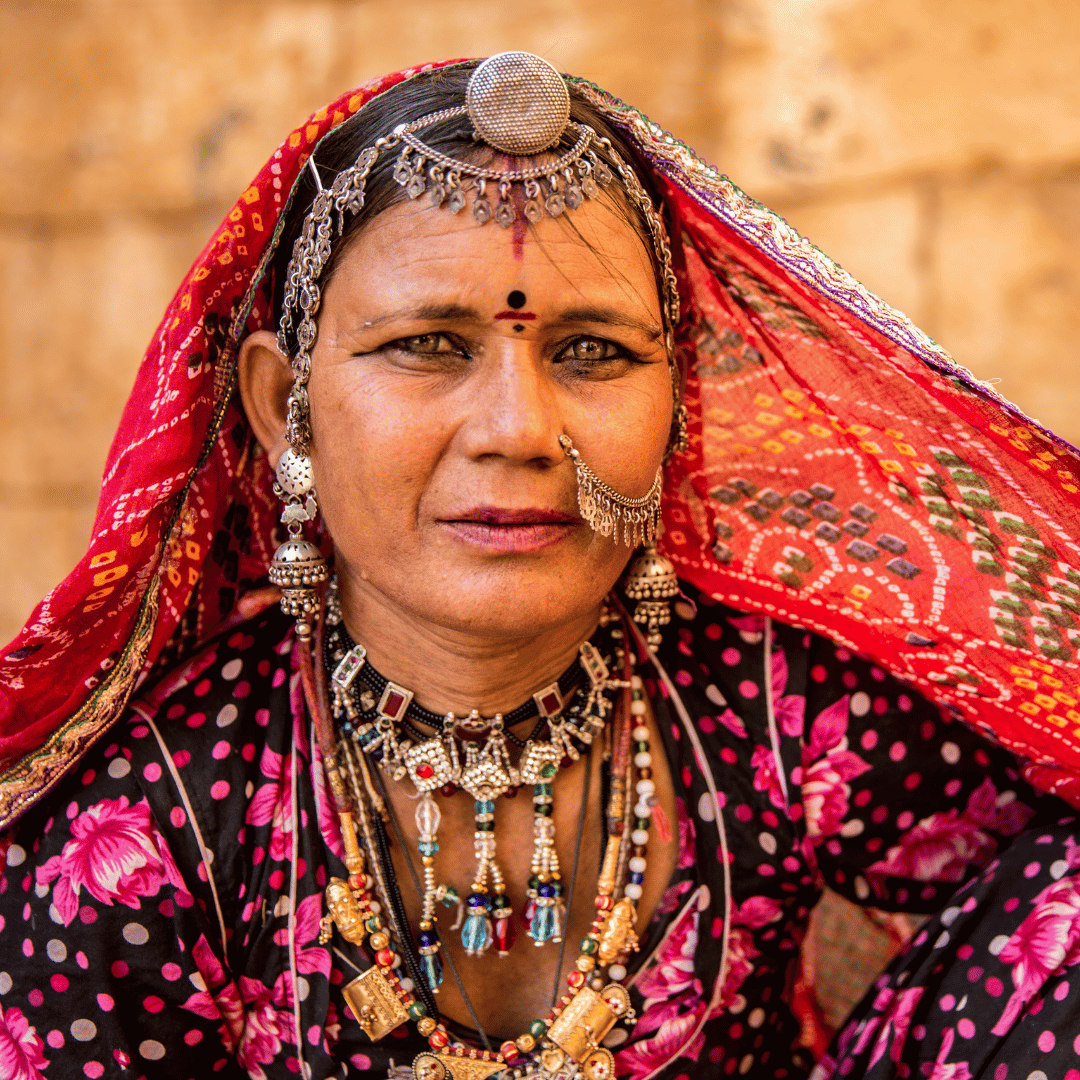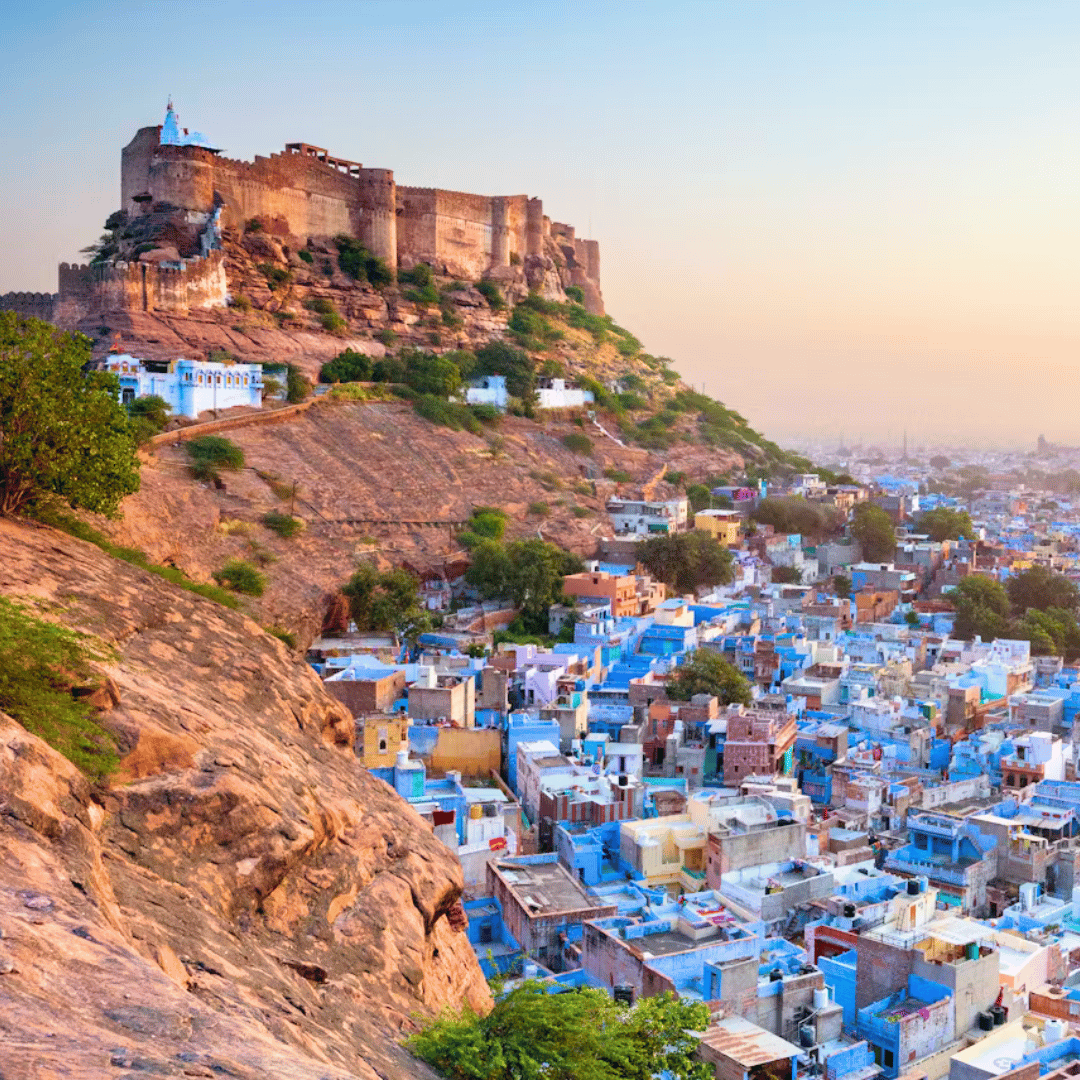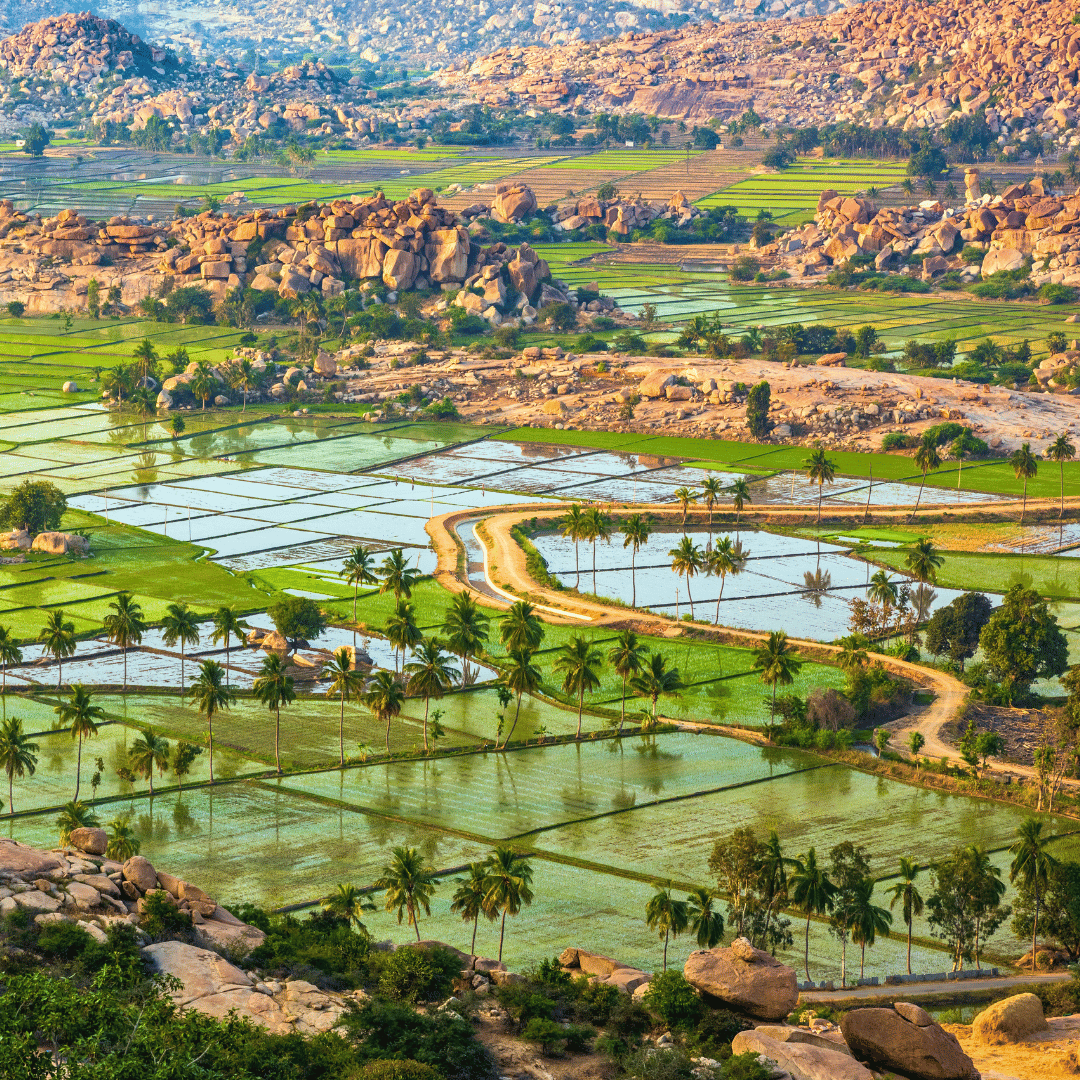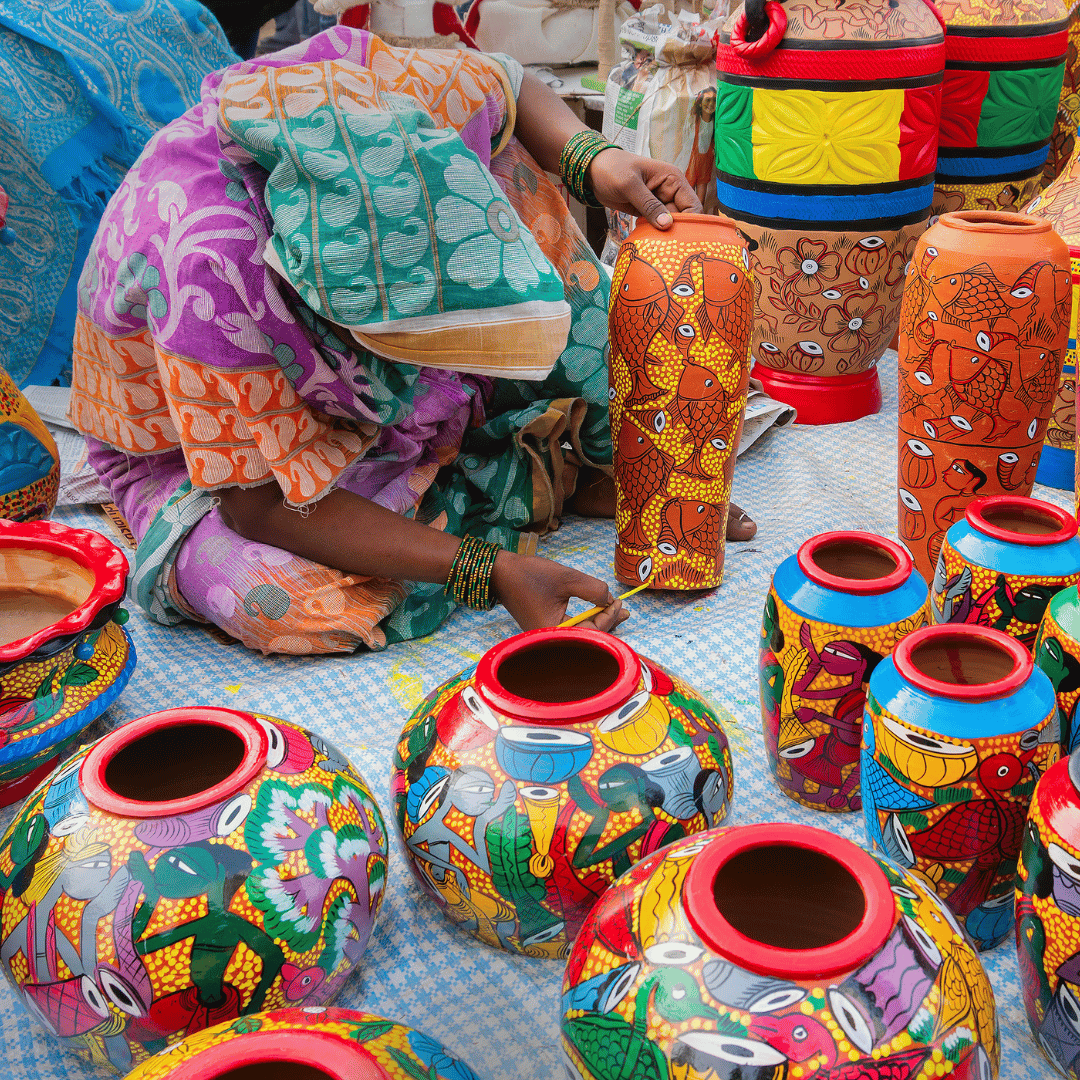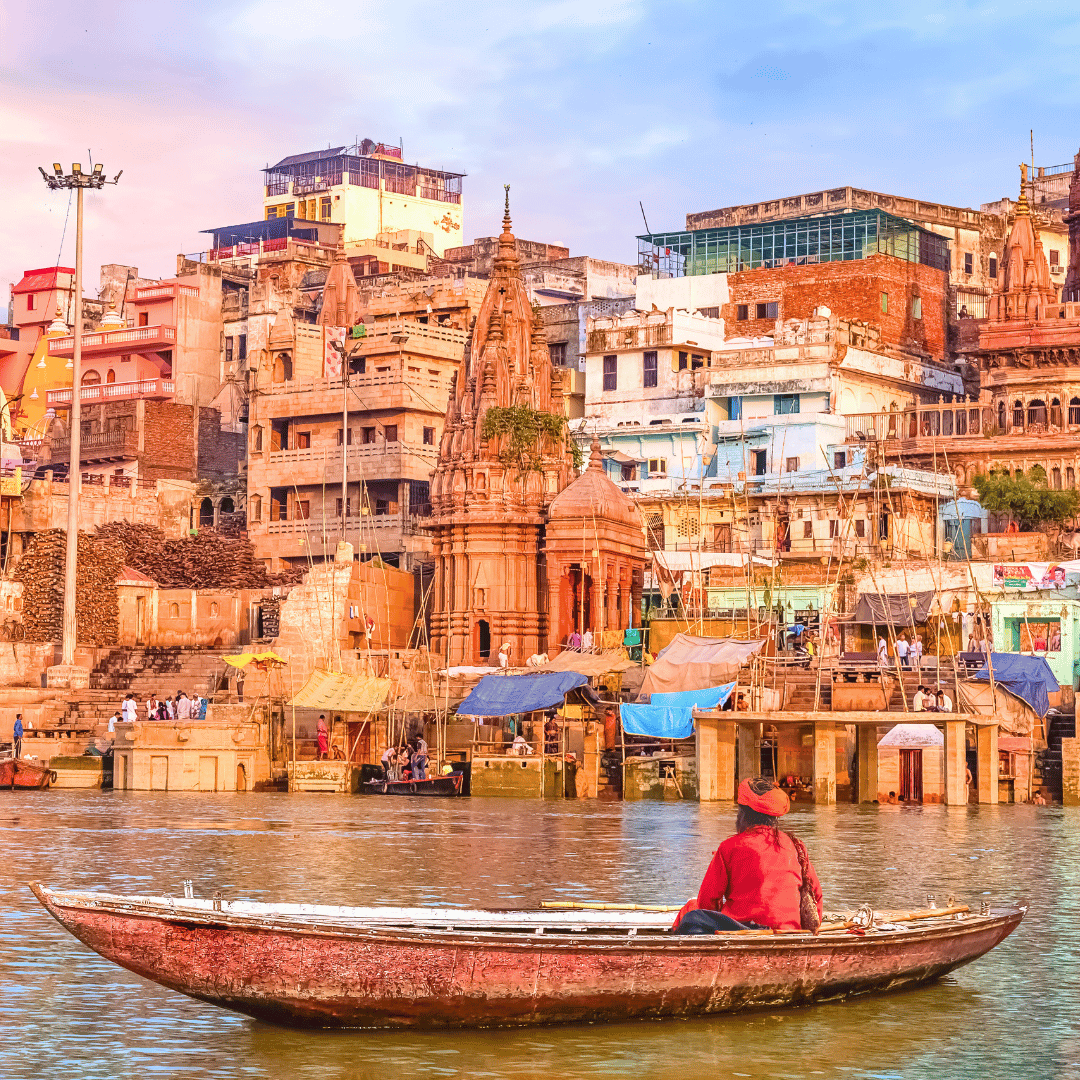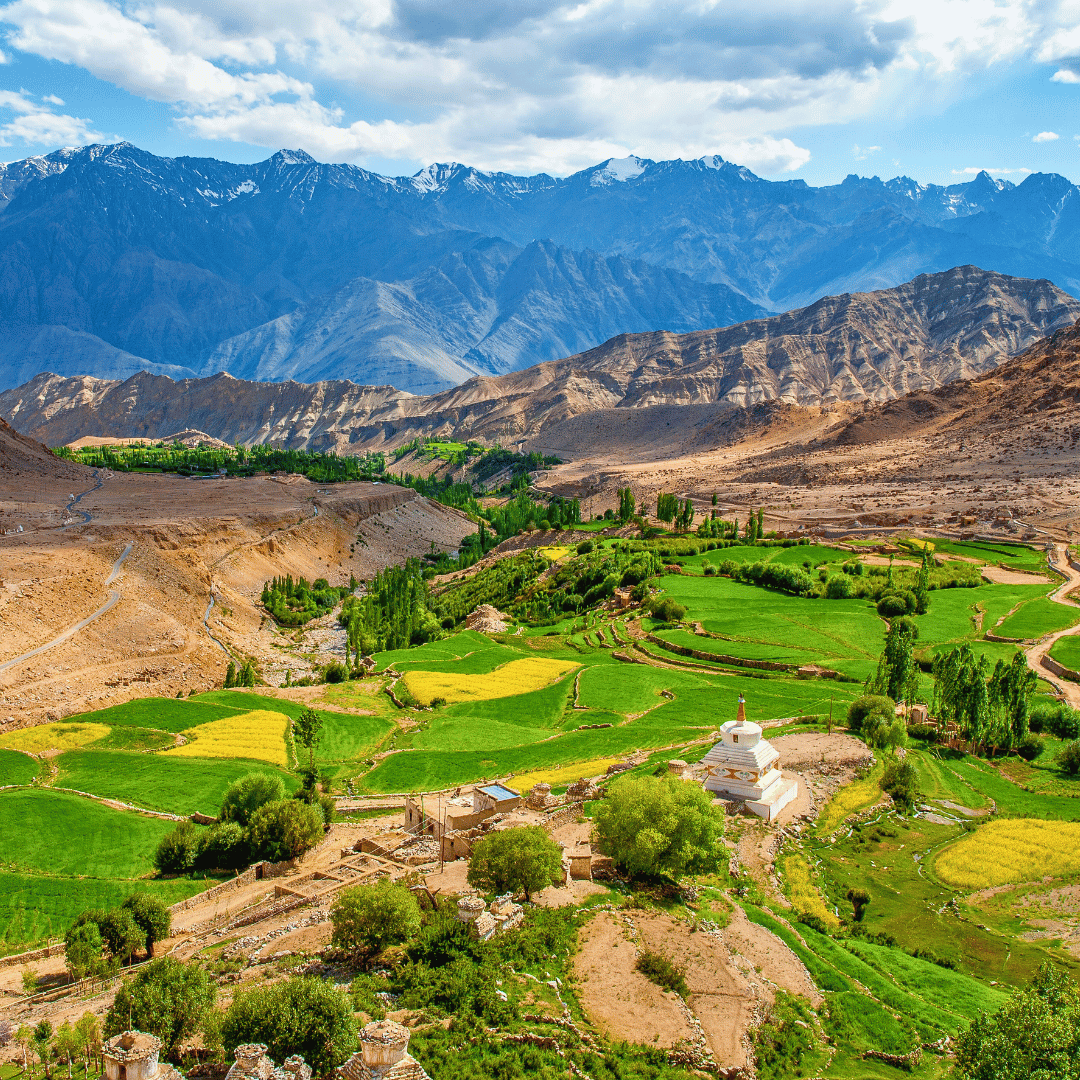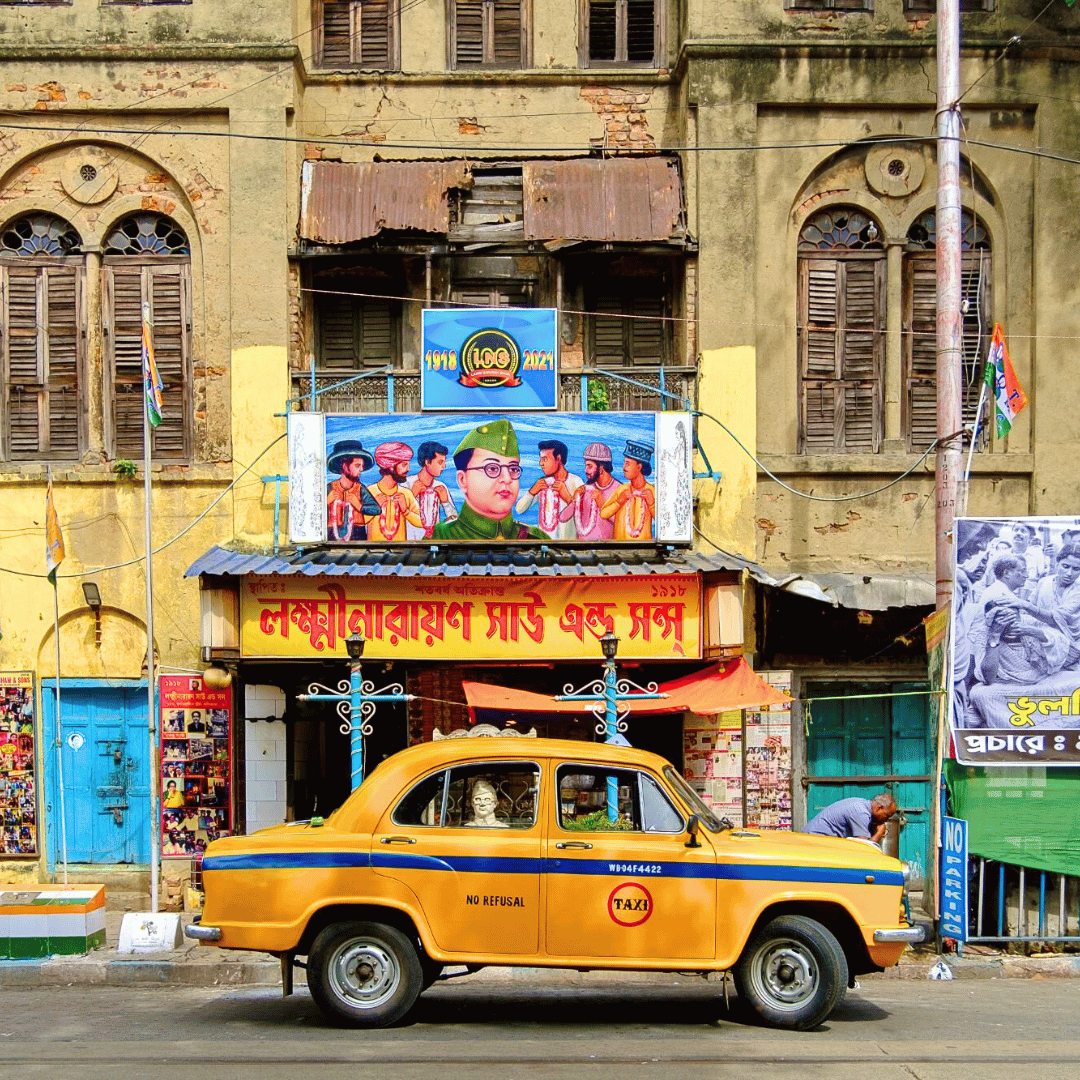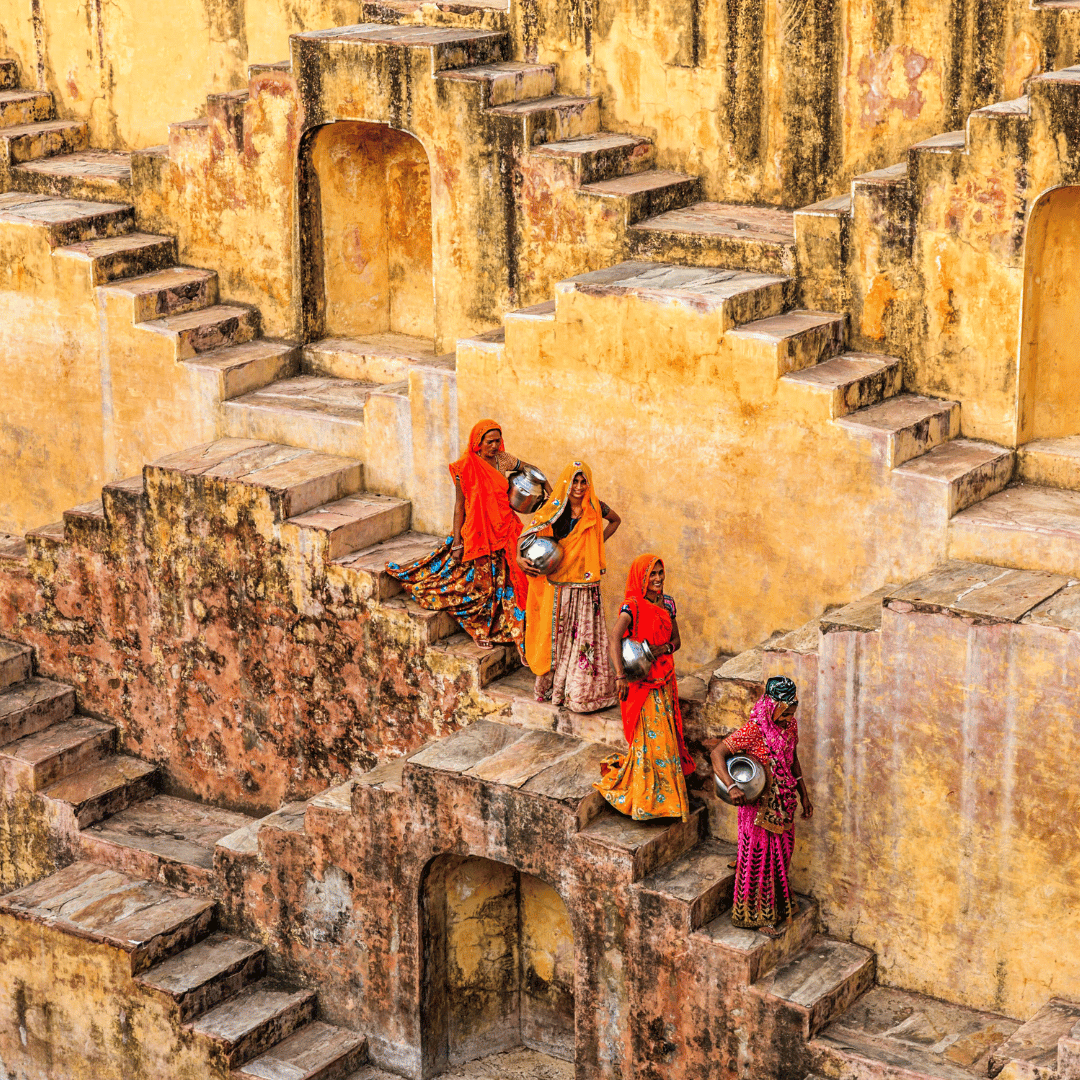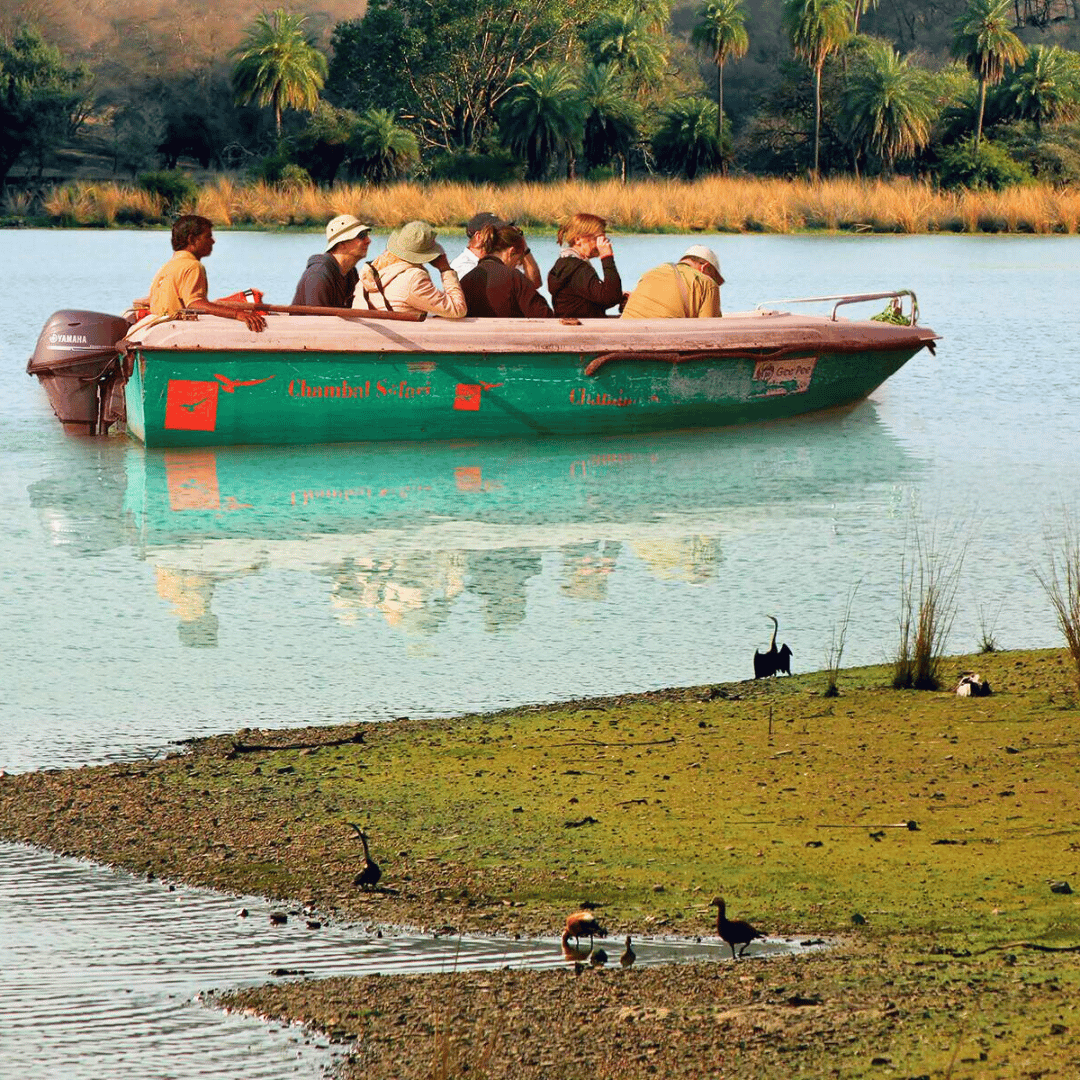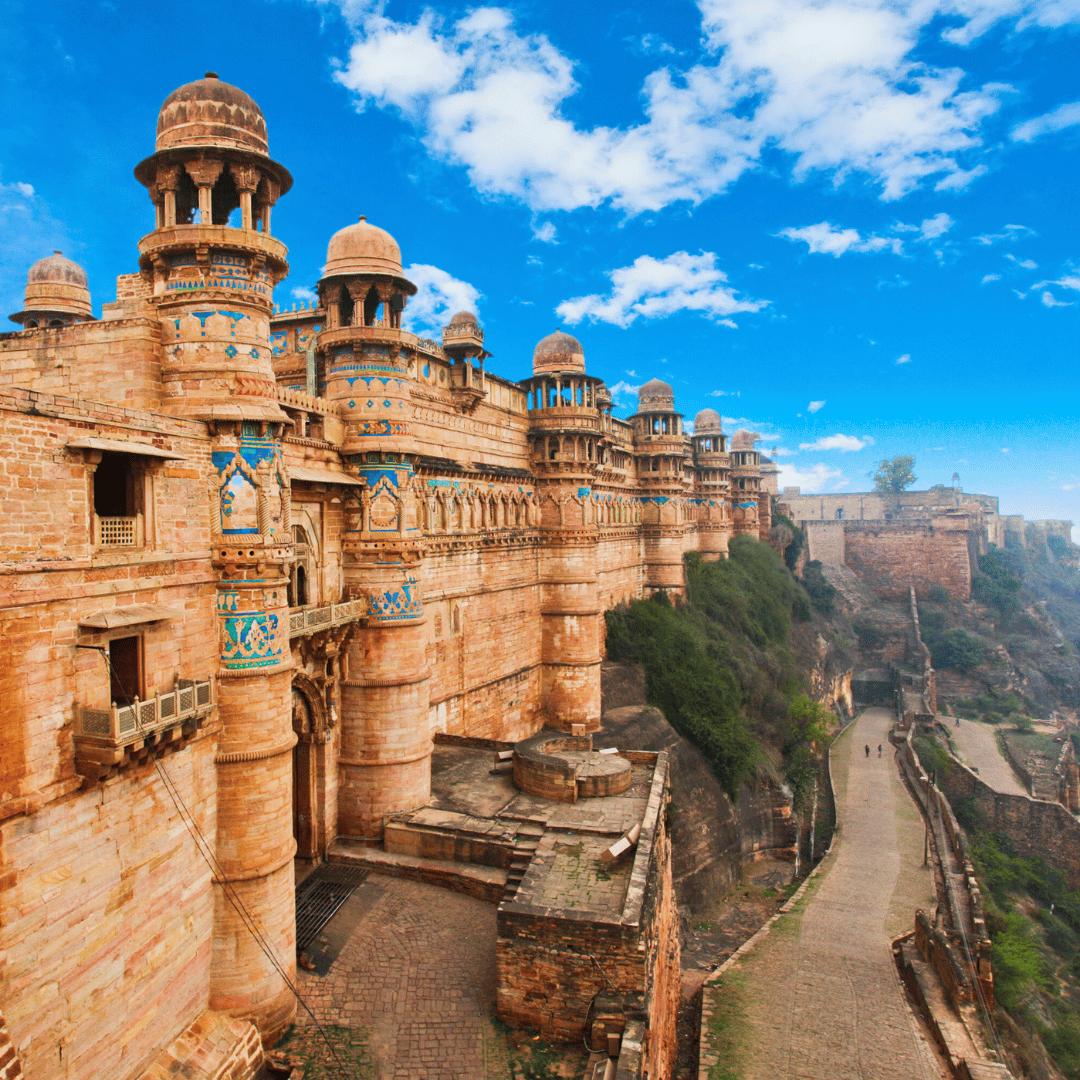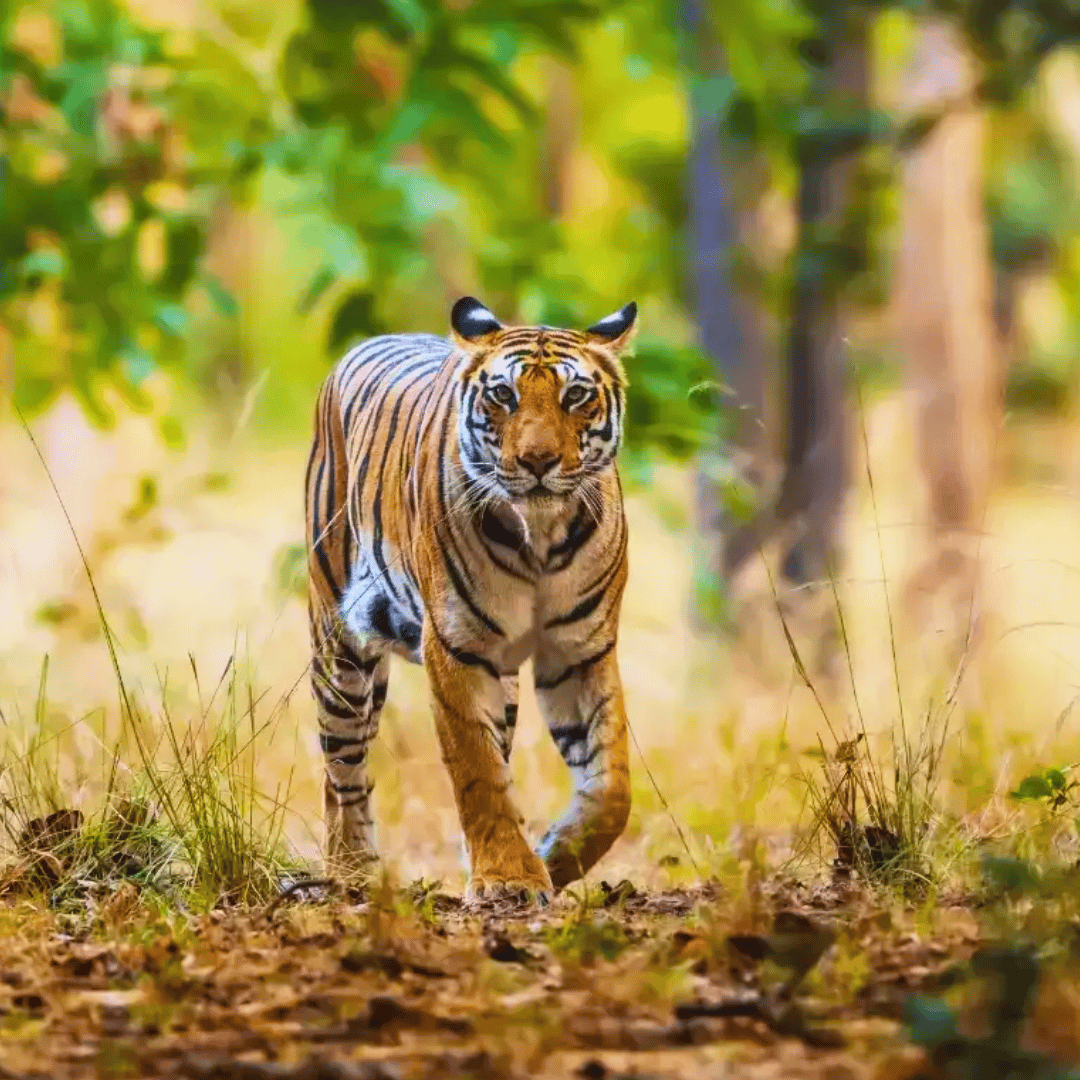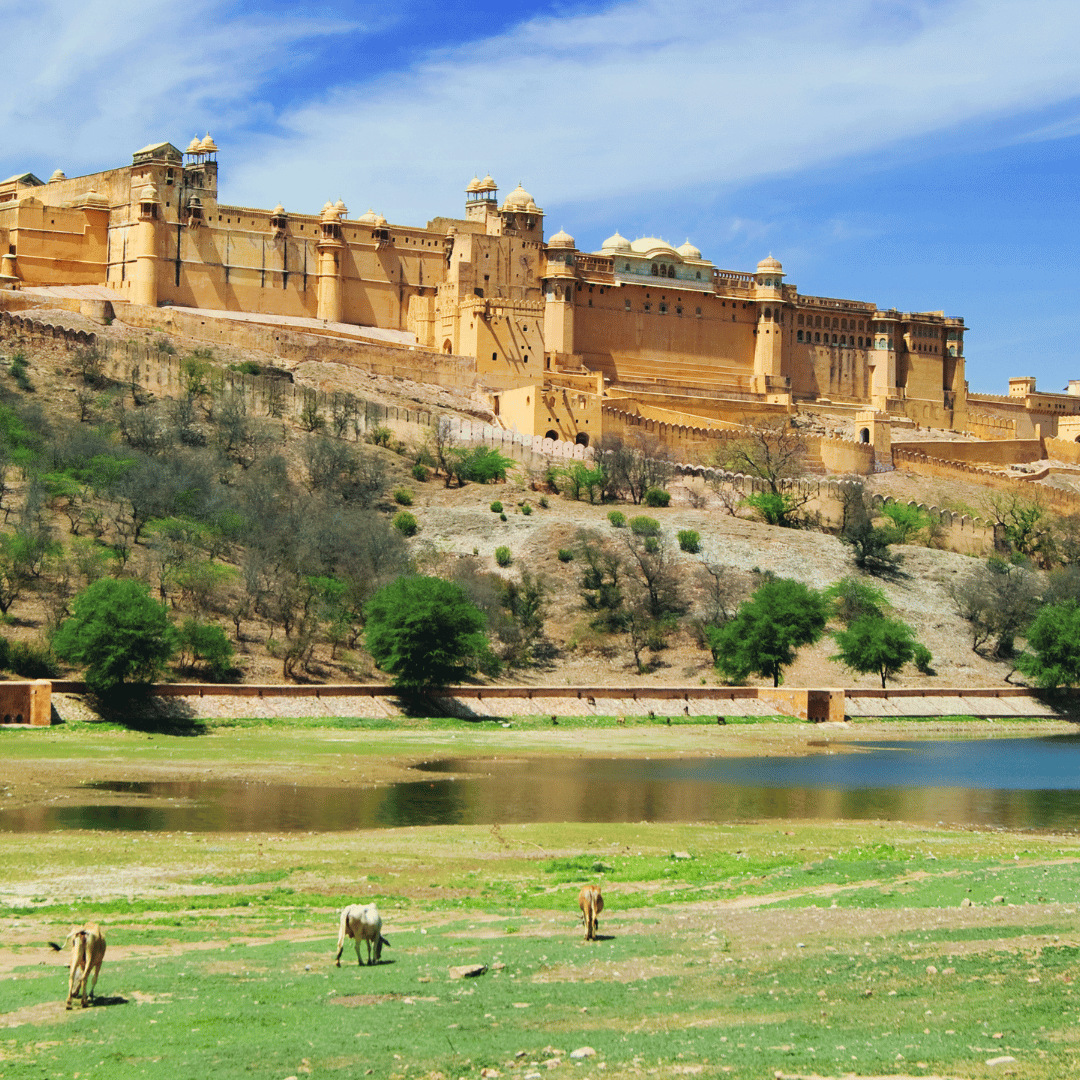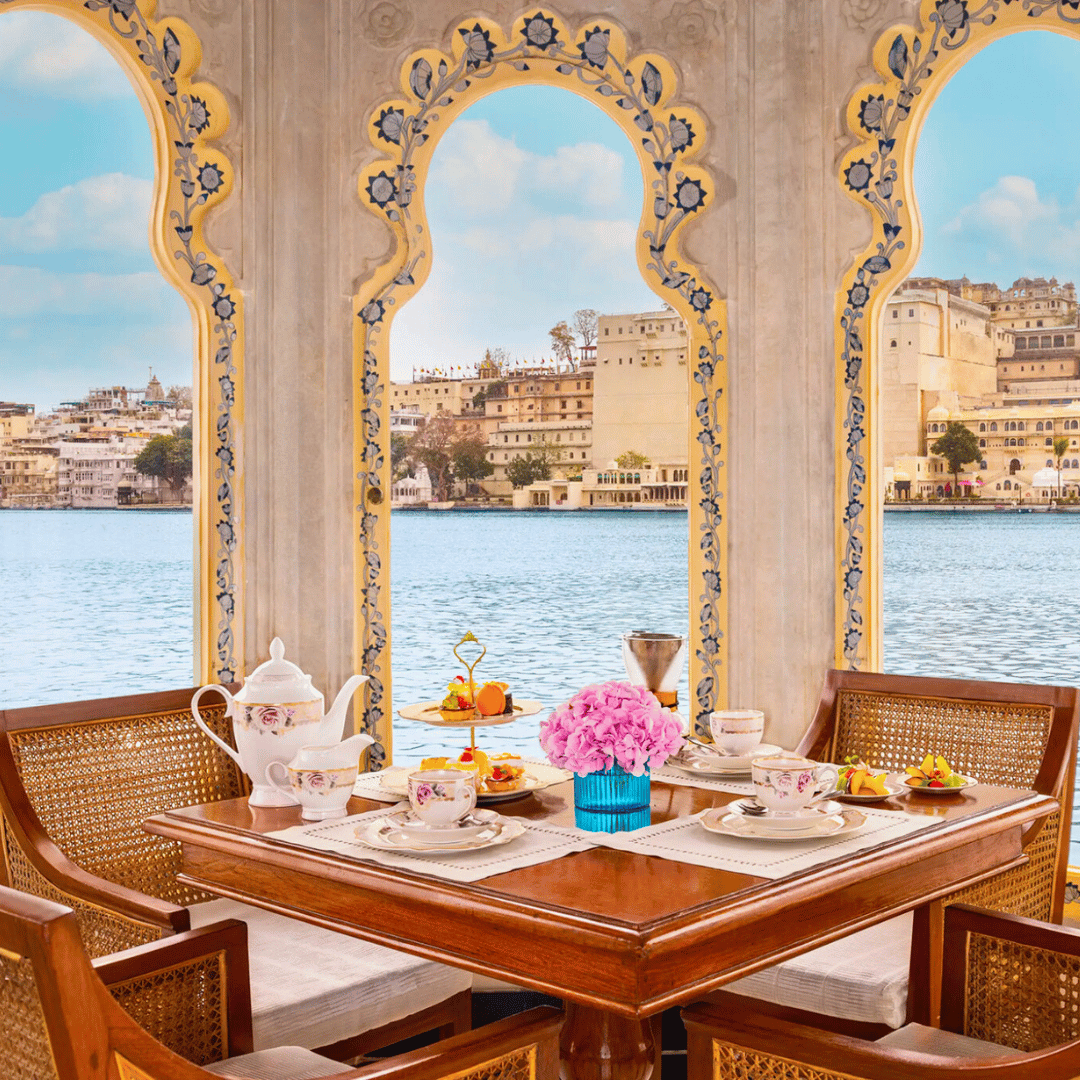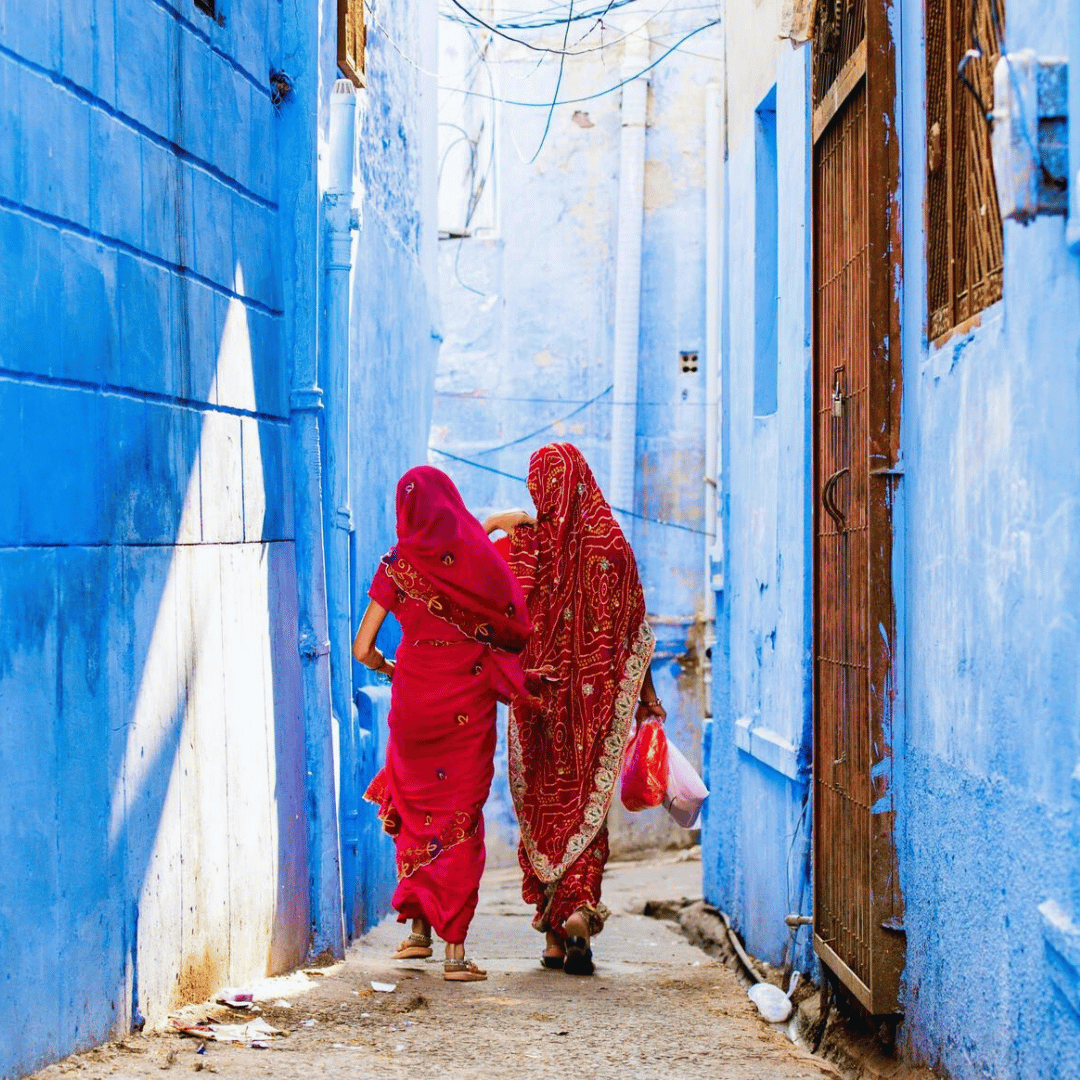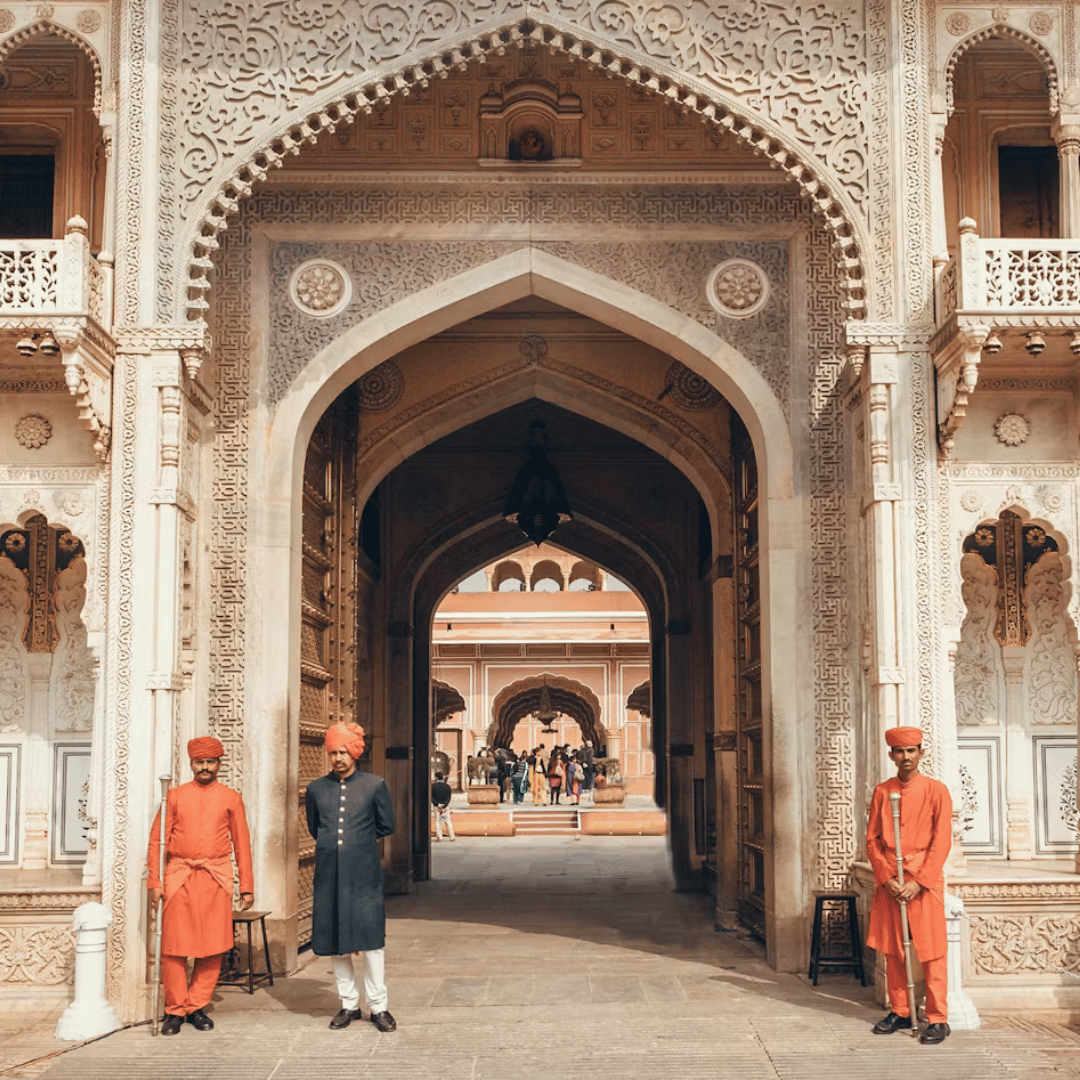Classic Rajasthan Tour Itinerary
-
Welcome to India! You will be met upon arrival and transferred to your hotel.
Delhi is not a single city but a collection of many, shaped by over a thousand years of history. What is now broadly referred to as Delhi consists of Old Delhi and New Delhi, each with its own character, reflecting different eras of rule, culture, and architecture. The city’s origins date back to 1060 with Lal Kot, established by the Tomar dynasty. Over the centuries, Delhi evolved through multiple reincarnations, each built by different rulers, leaving behind an extraordinary architectural legacy.
One of the most significant developments was Shahjahanabad, founded in 1638 by the Mughal emperor Shah Jahan. This walled city, now known as Old Delhi, became the capital of Mughal India and remains a place of bustling markets, grand mosques, and imposing forts. The most recent transformation came in 1931 when the British inaugurated New Delhi as the capital of their empire, introducing wide boulevards, colonial-era structures, and meticulously planned urban spaces. Today, traces of all eight historical cities remain, making Delhi a living museum of India’s layered past.
-
This morning, visit the medieval Jama Masjid, followed by a walking tour through Old Delhi’s traditional businesses, where artisans continue to practise centuries-old crafts. This area, once the heart of Mughal India, remains a vibrant hub of trade, with narrow lanes lined with spice merchants, jewellers, and weavers whose skills have been passed down through generations.
The Jama Masjid, also known as the "World Reflecting Mosque," is the largest mosque in India and a defining landmark of Old Delhi. Commissioned by the Mughal emperor Shah Jahan, its construction began in 1650 and was completed in 1656, making it his final grand architectural project after the Red Fort and the Taj Mahal. The mosque’s vast courtyard can accommodate 25,000 worshippers, and its striking red sandstone and marble domes reflect the grandeur of Mughal design.
In the afternoon, explore New Delhi, visiting Humayun’s Tomb, the Qutab Minar, and driving past Lutyens’ Delhi. Humayun’s Tomb, completed in 1570, is a UNESCO World Heritage Site and a significant milestone in Mughal architecture. It was the first garden-tomb on the Indian subcontinent, designed in the Persian Charbagh style, which later inspired the Taj Mahal. This fusion of Persian and Indian influences marked a turning point in architectural design, setting a precedent for later Mughal-era mausoleums.
The Qutab Complex, located in the Mehrauli Archaeological Park, is home to several significant structures. Among them is the Quwwatu’l-Islam Mosque, the first mosque built in India after the Islamic conquest. The complex also contains a remarkable 7-metre-high iron pillar, believed to date back to the 4th century, which has resisted rusting for over 1,500 years. The most famous feature of the site is the Qutab Minar, a 72.5-metre-high tower of intricately carved red and buff sandstone. Tapering from a diameter of 14.32 metres at its base to just 2.75 metres at the top, it remains the tallest stone minaret in India.
New Delhi, often referred to as Delhi’s "Eighth City," was designed and built between 1912 and 1931 by British architects Edwin Lutyens and Herbert Baker. Unlike the older sections of the city, which evolved organically over centuries, New Delhi was carefully planned, with grand boulevards radiating outward from key imperial landmarks. At the centre of this design is the Rashtrapati Bhawan, formerly the Viceroy’s House, situated atop Raisina Hill. This vast palace, once the seat of British power in India, now serves as the official residence of the President, standing as a symbol of India’s transition from colonial rule to independence.
-
Depart early in the morning for Delhi station to board a train to Churu, located in the Shekhawati region. The journey takes approximately five hours, passing through rural landscapes and offering glimpses of daily life in northern India. Shekhawati is often referred to as an ‘open-air art gallery’ due to its abundance of ornately painted buildings, including havelis, temples, and chhatris (cenotaphs), which date back to the 18th and 19th centuries.
Churu, one of the prominent towns in this region, is renowned for its grand havelis adorned with intricate frescoes. These mansions were built by wealthy merchants, reflecting both their prosperity and their patronage of the arts. Among the most impressive are the Kanhaiya Lal Bagla ki Haveli and Surana Haveli, the latter notable for its hundreds of small ornamental windows. Churu is also home to finely crafted cenotaphs, which serve as memorials to prominent figures from the town’s past, featuring detailed carvings and domed structures typical of Rajasthani architecture.
Upon arrival, take a guided tour of Churu, exploring its historic streets and architectural landmarks before continuing with a short drive to Ramgarh. Set amidst rolling sand dunes, Ramgarh was once among the wealthiest towns in India, established by prosperous traders who left behind opulent havelis, temples, and stepwells. The town’s faded grandeur speaks to its illustrious past, offering a fascinating glimpse into Rajasthan’s merchant heritage. After settling into your hotel, take time to appreciate the distinct character of this desert town, where art, history, and traditional craftsmanship remain deeply ingrained in daily life.
-
Spend the morning exploring the historic town of Ramgarh, often referred to as an 'open-air art gallery' due to its abundance of painted havelis, temples, chhatris (cenotaphs), and joharas (water tanks). Strolling through its bustling bazaars offers a glimpse into a bygone era, showcasing the rich architectural and cultural heritage of the region.
Following your exploration, embark on a four-hour drive to the desert city of Bikaner. Established in the 15th century by Rao Bika Ji, a descendant of Jodhpur's founder, Bikaner is encircled by a high crenellated wall, characteristic of many Rajasthani cities. Historically, Bikaner served as a vital staging post on the caravan trade routes, much like its southern counterpart, Jaisalmer. The city has preserved its medieval ambiance, largely untouched by external influences, allowing traditional lifestyles to flourish. A prominent attraction is the imposing Junagarh Fort, renowned for its intricate architecture and historical significance.
If your visit coincides with early January, you may experience the Bikaner Camel Festival, held annually in January. This event celebrates the indispensable role of camels in Rajasthani culture and economy. Festivities commence with a vibrant procession of adorned camels against the backdrop of Junagarh Fort, followed by activities such as camel races, dance performances, and beauty pageants. The festival also features traditional folk music and dance, offering a deep dive into the local heritage.
-
This morning, set off on a five-hour drive to Jaisalmer, a historic city nestled in the heart of the Thar Desert. Often referred to as the "Golden City" due to its distinctive honey-coloured sandstone architecture, Jaisalmer was founded in the 12th century by Rawal Jaisal, a Rajput ruler. Its strategic position along the ancient trade routes made it a thriving commercial hub, connecting India with Egypt, Arabia, Persia, Africa, and Europe.
During its prosperous medieval period, Jaisalmer became a centre for traders dealing in silk, spices, and precious stones. The wealth generated from this lucrative trade is reflected in the city's grand architecture. Former rulers and affluent merchants commissioned some of Rajasthan’s most exquisite sandstone buildings, including intricately carved havelis, temples, and the imposing Jaisalmer Fort.
Built from yellow sandstone, Jaisalmer Fort rises dramatically from the desert landscape and remains one of the few "living forts" in the world, still inhabited by locals. Despite the harsh desert climate and centuries of wind erosion, the city’s structures have endured, their detailed facades preserving a legacy of craftsmanship. As you approach Jaisalmer, the sight of its fort and historic skyline emerging from the golden sands of the Thar Desert is a truly striking introduction to this remarkable destination.
-
Spend today exploring Jaisalmer, a city steeped in history and renowned for its golden sandstone architecture. The city’s iconic Jaisalmer Fort dominates the skyline, rising 100 metres above the surrounding streets with its 99 bastions forming an imposing yet mesmerising silhouette. Built in 1156 by Rawal Jaisal, the fort is among the largest in the world and remains one of the few "living forts," still inhabited by thousands of residents. The late afternoon sun casts a warm glow on its honey-coloured walls, enhancing its ethereal beauty.
Inside the fort, explore the Rawal’s seven-storey palace, where exquisitely carved balconies, courtyards, and intricate stone latticework showcase the skill of Jaisalmer’s artisans. The fort also houses several Jain temples, known for their detailed stone carvings and sacred relics, as well as residential quarters dating from the 12th to 15th centuries, still occupied by families today. Beyond the fort, Jaisalmer is often called the “Museum City” for its stunning collection of historic havelis—lavishly decorated mansions built by wealthy merchants. Among the most remarkable are Salim Singh-ki-Haveli, with its striking peacock-shaped roof; Patwon-ki-Haveli, a cluster of five intricately designed homes; and Nathmalji-ki-Haveli, adorned with delicate carvings and artistic flourishes.
No visit to Jaisalmer is complete without venturing beyond the city to the sweeping sand dunes of the Thar Desert. A short journey by jeep takes you to the picturesque Sam Sand Dunes, where you can experience the timeless charm of a camel ride across the rolling landscape. Watching the desert transform as the sun sets over the dunes is a quintessential Rajasthan experience.
On the way to the dunes, visit the abandoned village of Kuldhara, a place shrouded in mystery. Once home to the prosperous Paliwal Brahmins, Kuldhara was one of 84 villages in the region that flourished for centuries. However, in the early 19th century, the entire village was suddenly deserted. According to legend, the daughter of the village chief caught the unwanted attention of the powerful prime minister of Jaisalmer’s ruler. Given the ultimatum of surrendering the girl or facing severe consequences, the villagers chose instead to flee overnight, vanishing without a trace. Before leaving, they are said to have placed a curse on the land, warning that anyone who attempted to settle in Kuldhara would meet an untimely end. To this day, the village remains abandoned, its crumbling structures adding an eerie yet fascinating chapter to Jaisalmer’s storied past.
-
This morning, embark on a five-hour drive to Jodhpur, often referred to as Rajasthan’s ‘Blue City’ due to the striking blue-washed houses that line its historic streets. This vibrant city, founded in 1459 by Rao Jodha, the chief of the Rathore clan, was established as the capital of the Marwar State. Its strategic location along the ancient silk and spice trade routes made it a flourishing centre of commerce in the 16th century, attracting traders from across India and beyond.
Despite its expansion into Rajasthan’s second-largest city, Jodhpur has managed to retain its medieval charm, with its narrow alleyways, bustling markets, and centuries-old structures reflecting its storied past. The cityscape is dominated by the imposing Mehrangarh Fort, perched on a rocky outcrop 125 metres above the plains, serving as a reminder of Jodhpur’s regal legacy. Below, the old city is a labyrinth of winding streets, where bazaars overflow with textiles, handicrafts, and antiques, carrying forward Jodhpur’s long-standing reputation as a centre for art and craftsmanship.
The blue-painted houses, once a signifier of the Brahmin caste, have over time come to define Jodhpur’s identity, creating a visually captivating contrast against the ochre landscape of the surrounding desert. The city’s lively atmosphere is enriched by its rich culinary heritage, with famed dishes such as mirchi vada and mawa kachori offering a taste of local flavours. As you arrive, the blend of historic grandeur and everyday life makes for an unforgettable introduction to Jodhpur’s enduring appeal.
-
Spend the morning exploring Jodhpur with a local guide, gaining insight into its rich history and remarkable architecture. While the city is often recognised for its vibrant blue houses, it is also home to some of Rajasthan’s most impressive palaces and stately buildings, which reflect the grandeur of its royal past.
At the heart of Jodhpur’s heritage is Mehrangarh Fort, one of the most formidable and awe-inspiring fortresses in India. Perched 125 metres above the city on a rocky hill, the fort’s massive walls and imposing gates have stood as guardians of Jodhpur since its construction in the 15th century by Rao Jodha. Within the fort, a beautifully preserved Rajput palace houses an extensive museum displaying the opulent possessions of the Rathore dynasty. The museum’s royal apartments feature intricate mirror work, lavish decorations, and priceless artefacts, offering a glimpse into the lives of Jodhpur’s rulers. From the crenelated ramparts, panoramic views of the city’s blue rooftops stretch towards the Thar Desert, making it a perfect vantage point for photographers.
Just a short distance away lies Jaswant Thada, an exquisite white marble cenotaph built in 1899 by Maharani of Jaswant Singh II in honour of her late husband. Known as the "Taj Mahal of Marwar," this intricately carved memorial serves as the traditional cremation site for Jodhpur’s rulers. The site features delicate marble latticework, portraits of Jodhpur’s Maharajas, and tranquil gardens with carved gazebos, a multi-tiered landscape, and a serene lake, making it a peaceful retreat from the bustle of the city.
In the afternoon, take a stroll around the lively Sardar Market, located near the city’s famous clock tower. This bustling marketplace is a sensory feast, offering an array of textiles, handcrafted silver jewellery, aromatic spices, and colourful Rajasthani handicrafts. The market is particularly known for its vibrant bandhani (tie-dye) fabrics, traditional mojari (leather shoes), and fragrant local teas and spices. Here, you can experience the energy of local traders and artisans at work, making it an ideal place to soak up Jodhpur’s dynamic culture and pick up a unique souvenir.
-
After a leisurely breakfast, you will be collected from your hotel and driven three hours to Bera, a small village nestled in the rugged landscape of southern Rajasthan. Unlike the larger cities of the state, Bera offers a peaceful retreat into nature, surrounded by granite hills, scrub forests, and ancient caves that provide the perfect habitat for one of India’s most elusive predators - the leopard.
Upon arrival, check in to your hotel and take some time to settle in and soak up the tranquillity of the area. Bera is unique in that it is not a designated wildlife reserve, but rather a region where leopards roam freely among the local villages and rocky outcrops. The harmonious coexistence of humans and wildlife here is a rare and fascinating aspect of life in this part of Rajasthan.
Later in the afternoon, embark on a thrilling wildlife safari led by your host, an expert tracker who knows the terrain and the habits of Bera’s resident leopards. The safari takes you deep into the wilderness, where the dramatic rocky hills create the perfect vantage points for spotting these elusive cats. Leopard sightings in Bera are among the most reliable in India, with an almost guaranteed chance of observing them in their natural habitat. The experience is made even more remarkable by the setting - away from the crowds of national parks, this is a rare opportunity to witness wildlife in an undisturbed environment. As the sun sets, the landscape transforms into a striking blend of golden light and shadow, adding to the thrill of the search.
After the safari, return to your accommodation and unwind, perhaps reflecting on the day’s adventure over a quiet evening in the heart of Rajasthan’s wild countryside.
-
This morning, set off on a 3.5-hour drive to Udaipur, with a stop en route at the magnificent Ranakpur Temples, one of the most important pilgrimage sites of the Jain faith. Nestled in a quiet valley of the Aravalli Hills, this stunning temple complex was built in the 15th century and is dedicated to Adinath, the first Jain Tirthankara (Enlightened One). It is considered one of the five holiest sites in Jainism and is renowned for its breathtaking architecture.
The main temple, Chaumukha, is a masterpiece of marble craftsmanship, featuring 29 intricately carved halls supported by an astonishing 1,444 pillars—each unique in its design and embellishment. No two pillars are the same, with their delicate carvings depicting celestial beings, divine figures, and intricate floral patterns. The temple’s open, light-filled design reflects the Jain principle of non-violence and harmony with nature. Within the complex, there are two smaller temples dedicated to Jain deities Neminathji and Paraswakathji, both dating back to the 14th century. A separate temple is dedicated to the Hindu Sun God, Surya, adding to the spiritual significance of the site.
After exploring the temples and admiring their exquisite detail, continue your journey to Udaipur. Founded in 1559 by Maharana Udai Singh II, Udaipur is often referred to as the ‘City of Lakes’ and is regarded as one of the most picturesque and romantic destinations in India. In 1829, Colonel James Tod, the East India Company’s Political Agent in the region, famously described Udaipur as “the most romantic spot on the continent.” The city’s beauty is defined by its elegant palaces, whitewashed havelis, and temples, all reflected in the tranquil waters of Lake Pichola. The lake, surrounded by rolling hills, bathing ghats, and domed cupolas, enhances the dreamlike quality of the cityscape.
Udaipur’s grand City Palace, a sprawling complex of turreted balconies, courtyards, and mosaicked halls, stands as a testament to the artistic and architectural achievements of the Mewar rulers. As you arrive in Udaipur, take in the charm of the city and incredible views.
-
Begin your exploration of Udaipur at the magnificent City Palace, the largest palace complex in Rajasthan. Perched on the eastern banks of Lake Pichola, this grand structure was built over nearly 400 years, with each successive Mewar ruler adding to its splendour while maintaining a harmonious architectural style. The palace consists of four major and several smaller palaces, seamlessly integrated to form an imposing façade of balconies, towers, and cupolas. Inside, the richly decorated interiors feature mirrored halls, inlaid tile work, marble courtyards, and delicate frescoes, reflecting the opulence of Rajasthan’s royal heritage. The palace also houses museums and galleries displaying royal artefacts, offering insight into the history of the Mewar dynasty.
From here, continue to Jagdish Mandir, a striking temple located just outside the main gate of the City Palace. Constructed in 1651 under the reign of Maharana Jagat Singh, this Hindu temple is dedicated to Lord Vishnu in his aspect as Jagannath, the preserver of the universe. The sanctum enshrines a black stone idol of Vishnu, while the temple itself is adorned with intricate carvings of deities, elephants, and celestial beings. The temple's towering spire dominates the skyline, making it one of the most important religious sites in Udaipur.
End the morning with a leisurely stroll through Saheliyon-ki-Bari, also known as the ‘Garden of the Maids of Honour.’ Created in the 18th century by Maharana Sangram Singh for the royal women of his court, this beautifully landscaped retreat provided a private sanctuary away from the formalities of palace life. Nestled below the embankment of Fateh Sagar Lake, the garden is a serene escape filled with lotus pools, marble pavilions, ornamental fountains, and finely sculpted elephant statues. The sound of water trickling from its fountains, originally designed to be activated by gravity, adds to the garden’s tranquil charm.
In the late afternoon, take a boat ride on the picturesque Lake Pichola, one of Udaipur’s defining features. As the boat glides across the lake’s calm waters, you’ll enjoy unmatched views of the two island palaces - Jag Niwas and Jag Mandir. Jag Niwas, built in 1754 by Maharana Jagat Singh II, is now the world-famous Lake Palace, a luxurious heritage hotel with elegant courtyards, fountains, and lush gardens. Further across the water stands Jag Mandir, a stunning 17th-century palace retreat said to have inspired Mughal Emperor Shah Jahan’s vision for the Taj Mahal after he sought refuge here during his youth. As the sun sets, the lake shimmers in golden hues, and the view of the City Palace rising behind the island palaces creates an unforgettable memory.
-
After a leisurely breakfast, you will be collected from your hotel and driven 3.5 hours to Bundi, a charming town known for its remarkable architecture, grand forts, palaces, and step wells, known locally as baoris. Unlike the more famous cities of Rajasthan, Bundi has retained much of its old-world atmosphere, with narrow, winding lanes, traditional bazaars, and a relaxed pace of life. The town’s rich heritage is reflected in its many historical monuments, which stand as a testament to its royal past.
This afternoon, explore some of Bundi’s most significant landmarks, beginning with the impressive Taragarh Fort. Perched high on a steep hillside overlooking the city, the fort was constructed in 1354 and is among Rajasthan’s oldest. Its vast walls and commanding position made it an important stronghold during the region’s turbulent past. One of its most remarkable features is Bhim Burj, the largest of its battlements, which once housed the legendary cannon Garbh Gunjam or ‘Thunder from the Womb,’ said to have been one of the most powerful of its time. The fort also contains three ancient water reservoirs that, despite centuries of exposure to the elements, have never dried up. The method of their construction remains unknown, highlighting the advanced engineering skills of medieval India.
Adjacent to the fort is Bundi Palace, an extraordinary structure that seems to merge seamlessly with the hillside. The palace is renowned for its exquisite murals and frescoes, which depict scenes of royal life, grand processions, and Hindu deities. Dominated by rich shades of green and blue, these paintings are considered some of the finest examples of Rajput art, reflecting the aesthetic refinement of the era. Though parts of the palace have fallen into disrepair, its beauty remains undeniable, with intricately carved balconies, arched doorways, and stunning courtyards offering a glimpse into Bundi’s regal past.
End the day with a visit to some of Bundi’s famous step wells. The town was once home to over fifty of these elaborate reservoirs, which were not only a crucial water source but also social gathering places. While many have been lost to time, a handful have been carefully maintained, showcasing the ingenuity of their design. Among the most striking is Raniji ki Baori, or ‘Queen’s Step Well,’ an ornate structure built in the late 17th century, featuring beautifully carved pillars and detailed motifs. These step wells, with their symmetrical steps descending deep into the earth, are a unique architectural feature of Rajasthan and remain a symbol of Bundi’s historical significance.
-
This morning, you will be collected from your hotel and driven four hours to Jaipur, the capital of Rajasthan and one of India’s most vibrant cities. Known as the ‘Pink City’ for its distinctive rose-hued buildings, Jaipur is a fascinating blend of history, craftsmanship, and regal grandeur.
Jaipur was founded in 1727 by Maharaja Sawai Jai Singh II, at a time when the Mughal Empire was waning under its ageing emperor, Aurangzeb. Unlike many older cities in Rajasthan, Jaipur was carefully planned, following principles of Vastu Shastra and Shilpa Shastra, the ancient Indian sciences of architecture and design. The city was divided into nine rectangular sectors, symbolising the nine planets, and was one of the first planned cities in India. The relative stability of the region allowed the rulers of Jaipur to amass great wealth, which they used to patronise art, culture, and architecture, shaping the city into an important centre of craftsmanship.
Recognising the value of skilled artisans, the rulers invited craftsmen from across India and beyond to settle in Jaipur. This led to the development of a thriving artistic community, and even today, the city remains one of India’s major hubs for traditional arts and crafts. Jaipur is renowned for its exquisite silver jewellery, gemstones, and intricate enamel work, as well as brassware, blue pottery, and detailed stone carving. The city’s legacy in textile arts is equally impressive, with hand-blocked prints, fine Kota doria saris, and beautifully embroidered leather footwear, known as mojari, among its most sought-after handicrafts. Miniature paintings, a tradition rooted in royal patronage, continue to flourish, showcasing delicate brushwork and vibrant natural pigments.
Beyond its artistic heritage, Jaipur is rich in history and architectural splendour. The city is home to grand palaces, imposing forts, and intricately designed temples that reflect its royal past. From the striking façade of Hawa Mahal to the grandeur of the City Palace and the astronomical brilliance of Jantar Mantar, Jaipur offers a captivating glimpse into Rajasthan’s regal traditions. Today, while it thrives as a modern metropolis, the city retains its old-world charm.
-
Begin your exploration of Jaipur today with visits to the City Palace, Jantar Mantar, Hawa Mahal, and Amber Fort, each offering a glimpse into the city’s regal and artistic heritage.
The vast City Palace complex, occupying nearly one-seventh of Jaipur’s walled city, is an imposing blend of traditional Rajput and Mughal architecture. Built by Maharaja Sawai Jai Singh II in the early 18th century, it remains one of the most magnificent palatial structures in Rajasthan. The palace is divided into a series of courtyards, lush gardens, and grand buildings, each reflecting a different aspect of Jaipur’s royal legacy. Chandra Mahal, the heart of the palace, is still home to the present Maharaja and his family, while Mubarak Mahal, originally a reception hall for foreign dignitaries, now houses a museum showcasing fine textiles, including elaborate royal garments. The Diwan-e-Khas, or Hall of Private Audience, displays two enormous silver urns, recognised as the largest silver vessels in the world, once used to carry holy Ganges water for the Maharaja’s trip to England. Nearby, the Diwan-e-Aam, or Hall of Public Audience, features a stunning collection of miniature paintings, royal artefacts, and ancient manuscripts. The palace’s exquisite Ridhi Sidhi Pol gateway is adorned with four intricately decorated doorways, each symbolising a different season, demonstrating the craftsmanship of Jaipur’s artisans.
Next, visit the Jantar Mantar, an extraordinary collection of astronomical instruments built by Sawai Jai Singh II. A keen astronomer and scholar, he constructed five such observatories across India, with the Jaipur site being the largest and best preserved. Now a UNESCO World Heritage site, Jantar Mantar is home to massive, precisely constructed instruments, including the world’s largest sundial, which still measures time with remarkable accuracy. The complex reflects the scientific advancements of the late Mughal period and remains an enduring symbol of India’s contributions to astronomy.
Continue to one of Jaipur’s most iconic landmarks, the Hawa Mahal, or ‘Palace of Winds.’ Built in 1799 by Maharaja Sawai Pratap Singh, this striking red and pink sandstone structure was designed to allow royal women, who adhered to strict purdah customs, to observe city life without being seen. The palace’s façade features 953 small jharokha (windows) with intricate latticework, allowing cool air to circulate, creating a natural air-conditioning effect. Its delicate honeycomb-like design has made it one of the most photographed buildings in India.
In the afternoon, travel to Amber Fort, located 11km from Jaipur. Before Jaipur became the capital, Amber was the stronghold of the Kachwaha rulers, and its sprawling fort-palace complex remains one of the most breathtaking in Rajasthan. Built from pale yellow and pink sandstone and white marble, Amber Fort rises dramatically from the rocky hills, offering stunning views of Maota Lake below. While its imposing exterior exudes strength, the interiors reveal a luxurious fusion of Rajput and Mughal artistry. The Sheesh Mahal (Hall of Mirrors), in particular, is a masterpiece, with thousands of mirrored tiles reflecting light to create a dazzling effect. The fort’s intricate carvings, grand courtyards, and stunning frescoes transport visitors to an era of royal grandeur.
End the day with a walking tour through the bustling bazaars of Old Jaipur, a labyrinth of narrow lanes filled with colour, movement, and the scent of spices. Tiny shops overflow with dazzling goods - brocades, gold-embroidered skirts, and shimmering saris; handcrafted silver and gemstone jewellery; glass and lacquer bangles; camel-leather juttis (shoes); intricate miniature paintings; puppets; blue pottery; and handwoven carpets. Jaipur is also known for its marble and sandstone carvings, antique furniture, and traditional brass and ironware. The markets are a feast for the senses, and if you’re interested in shopping, this is an excellent opportunity to test your bargaining skills and take home a piece of Rajasthan’s rich craftsmanship.
-
This morning, you will be collected from your hotel and driven to Agra, a journey of approximately five hours. Along the way, stop to explore the fascinating abandoned city of Fatehpur Sikri, a UNESCO World Heritage Site that stands as one of the finest examples of Mughal architecture in India.
Fatehpur Sikri was founded in 1569 by the Mughal emperor Akbar and served as the capital of his vast empire from 1571 to 1585. Following his military victories over Chittor and Ranthambore, Akbar decided to relocate his capital from Agra to this newly constructed city to honour the Sufi saint Salim Chishti, whose blessings were believed to have granted him a long-awaited heir. Designed as a grand walled city, Fatehpur Sikri was meticulously planned and featured an elaborate complex of palaces, royal courts, harems, mosques, and administrative buildings. The city's impressive structures include the Jama Masjid, one of the largest mosques in India, and the magnificent Buland Darwaza, a 54-metre-high gateway built to commemorate Akbar’s victory over Gujarat. Other highlights include the beautifully designed Panch Mahal, a five-storey palace used for entertainment and leisure, and the Diwan-i-Khas, which houses the intricately carved central pillar known as Akbar’s Throne.
Despite its splendour, Fatehpur Sikri was abandoned just 14 years after its completion, likely due to a scarcity of water. Left almost untouched for centuries, it remains one of the most well-preserved Mughal sites in India, offering a glimpse into the architectural vision and ambition of Akbar’s reign.
After exploring Fatehpur Sikri, continue on to Agra, a city with deep historical and cultural significance. The earliest mentions of Agra can be found in the ancient Indian epic, the Mahabharata, though its recorded history begins in the 11th century. However, it was during the Mughal era that Agra flourished, becoming a centre of power, culture, and architecture. Under Emperor Akbar, the city - then known as Akbarabad - became a hub for learning, commerce, and artistic innovation. Akbar, along with his successors Jahangir and Shah Jahan, transformed Agra into one of the most splendid cities in the Mughal Empire, commissioning many of its most famous monuments.
In the late afternoon, visit the Taj Mahal, one of the most universally admired architectural masterpieces in the world. Built by Emperor Shah Jahan in memory of his beloved wife, Mumtaz Mahal, the Taj Mahal is an enduring symbol of love and devotion. Construction began in 1631 and took 21 years to complete, employing approximately 20,000 labourers, artisans, and craftsmen from across India and Central Asia. Made from luminous white marble sourced from Rajasthan, the structure is adorned with intricate carvings, delicate floral motifs, and semi-precious inlays. Its iconic dome and symmetrical layout are perfect examples of Mughal architectural refinement.
Declared a UNESCO World Heritage Site in 1983, the Taj Mahal has been described as “the jewel of Muslim art in India and one of the universally admired masterpieces of the world’s heritage.” As the sun begins to set, watch as the changing light transforms the monument, shifting its colour from brilliant white to soft gold and pink hues - a breathtaking end to the day’s journey through India’s rich Mughal history.
-
This morning, embark on a tour of Agra Fort, one of the most significant and imposing structures of the Mughal era. In a time when power was displayed through grand fortifications, Agra Fort stood as a symbol of strength, authority, and architectural mastery. Recognised as a UNESCO World Heritage Site, this vast complex is a stunning example of Mughal military strategy combined with refined artistic sensibilities.
Built primarily during the reign of Emperor Akbar in 1565, Agra Fort was later expanded by his successors, Jahangir and Shah Jahan, who added their own touches of grandeur. Spanning 38 hectares, the fortress is enclosed by towering red sandstone walls that rise over 20 metres high, reinforced by bastions and a deep moat. The fort's sheer scale and strength made it an essential stronghold for the Mughal rulers, serving as both a military base and a royal residence. Within its 2.5-kilometre-long ramparts lie a series of palaces, mosques, halls, and courtyards that reflect the evolution of Mughal architecture.
The fort has four main gates, with the most remarkable being the monumental Delhi Gate. Built in 1568, this grand entrance served both as a defensive feature and a formal gateway for the emperor. Adorned with intricate inlay work in white marble, it is considered one of the finest examples of Akbar’s architectural achievements. In its time, access to the fort through this gate required crossing a wooden drawbridge over the moat, leading to an inner gateway known as Hathi Pol (Elephant Gate). Guarded by two life-sized stone elephants with mounted riders, this additional layer of security reinforced the fort’s defences.
Beyond its military function, Agra Fort also housed the opulent palaces of the Mughal rulers. Notable among these are the Jahangiri Mahal, the Khas Mahal, and the elegant Musamman Burj, where Shah Jahan, the emperor who built the Taj Mahal, was later imprisoned by his son Aurangzeb. From the marble balconies of this tower, Shah Jahan is said to have spent his final years gazing across the Yamuna River at the Taj Mahal, the mausoleum he built for his beloved wife.
After the tour, depart Agra and embark on a four-hour drive to Delhi airport for your onward flight, marking the end of your journey through some of India’s most remarkable historical sites. Whether heading home or continuing your travels in India, the memories of Agra’s Mughal wonders will leave a lasting impression.
The India Unbound Difference
At India Unbound, we’ve spent twenty years on the ground in India, learning all about its intricacies, landscapes and cultures. We use this first-hand knowledge to carefully curate travel itineraries for our guests, and are proud to be a reputable private touring specialist. In addition, our team of local partners offer guarantees of punctuality, quality and service. All of our India private tour itineraries include all accommodation mentioned, daily breakfasts and other meals as specified, all transfers, touring and sightseeing by air-conditioned Toyota Innova or similar vehicle, and internal flights as outlined in the itinerary. Private activities and sightseeing with English-speaking local guides are included, along with entrance fees, drinking water in the vehicle, and all vehicle-related charges such as tolls, parking fees, and taxes. The cost does not include visas or international flights, personal expenses such as drinks and laundry, meals and activities not specifically listed as included, or camera fees, which are rarely applicable. Prices are listed in Australian dollars and are based on per person, twin share. Please note that these may fluctuate depending on the time of year you’re looking to travel, and the type of accommodation you prefer.

